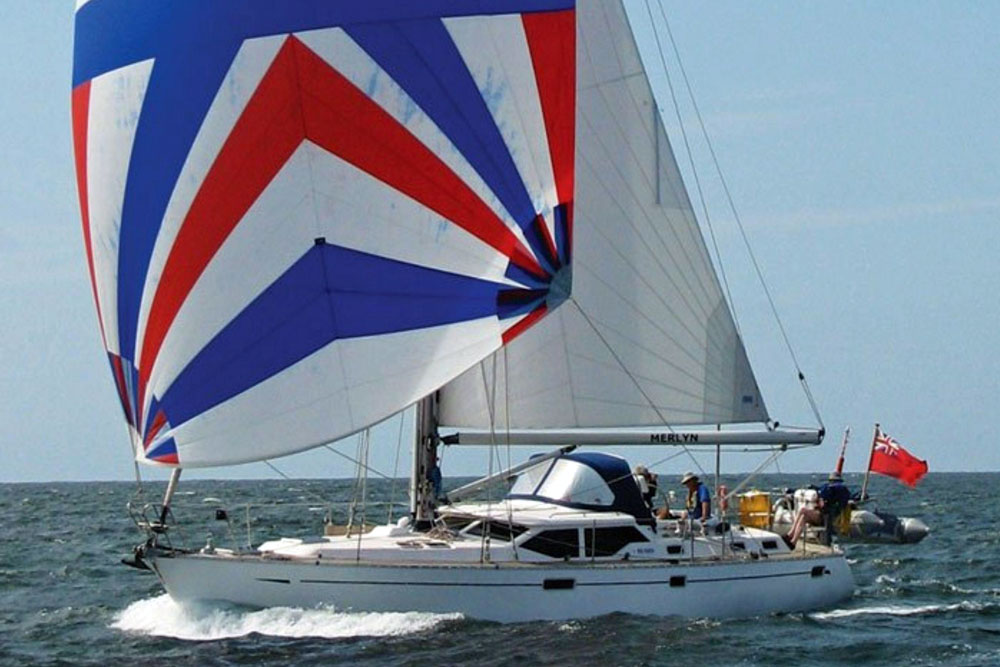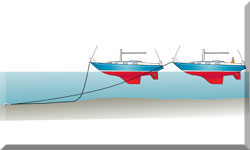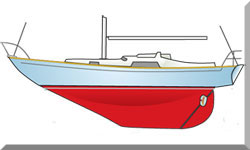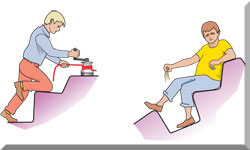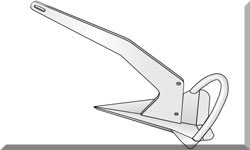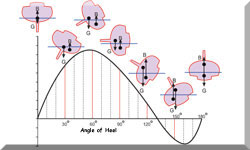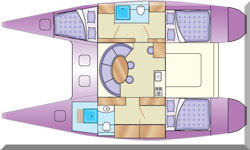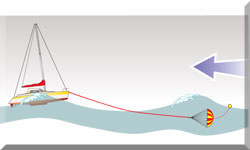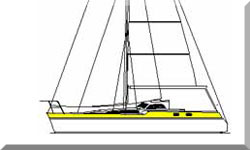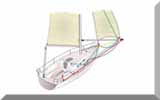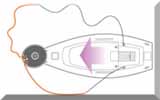- Home
- Sails
- Spinnaker Sails
- Choosing the Right Spinnaker
Choosing the Right Spinnaker: A Guide for Recreational Sailors
Spinnakers are the quintessential downwind sail, adding a thrilling dimension to any sailing experience. They can significantly boost a boat's speed and efficiency when sailing downwind, making them a popular choice for both racing and cruising sailors. However, with two main types available—symmetric and asymmetric—choosing the right spinnaker for your boat and sailing style can be a daunting task.
Spinnaker Types
Symmetric Spinnakers
Symmetric spinnakers are the traditional type, characterized by their symmetrical shape and the use of a spinnaker pole. The pole, attached to the mast and the windward side of the sail, allows the spinnaker to be set directly across the wind, maximizing its downwind performance. While offering exceptional performance when sailing dead downwind, symmetric spinnakers require more complex handling and a coordinated crew, making them more common in racing scenarios.
Asymmetric Spinnakers
Asymmetric spinnakers, on the other hand, are designed with an asymmetrical shape and do not require a spinnaker pole. Instead, they utilize a tack line attached to the bowsprit or the boat's centreline, allowing the sail to be set to one side of the boat. This design makes them easier to handle and more versatile, as they can be used for a wider range of wind angles, from downwind to reaching. Asymmetric spinnakers are a popular choice for cruising sailors due to their ease of use and broader applicability.
Gennakers, Cruising Chutes, and Other Terms
The world of spinnakers also includes various other terms like gennaker, cruising chute, and multi-purpose spinnaker. While these terms may cause confusion, they essentially refer to variations of asymmetric spinnakers designed for specific purposes or wind conditions. For instance, a gennaker is a type of asymmetric spinnaker optimized for reaching, while a cruising chute is a broader term for any asymmetric spinnaker used for cruising.
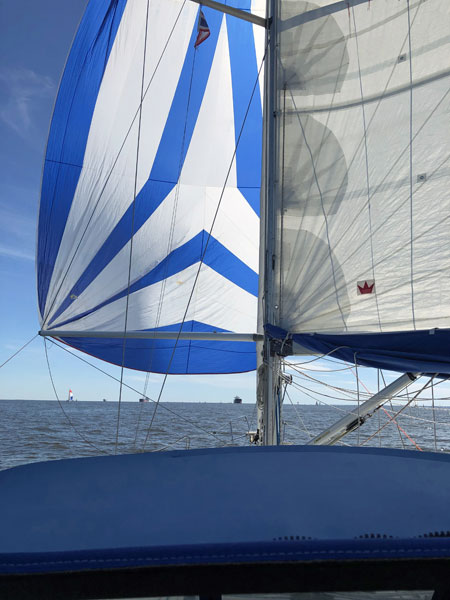 Unlike an asymmetric, this conventional symmetric spinnaker can be used to sail dead downwind
Unlike an asymmetric, this conventional symmetric spinnaker can be used to sail dead downwindThings to Consider When Choosing a Spinnaker
Boat Size and Type
The size and type of your boat play a crucial role in determining the appropriate spinnaker. Larger boats can handle larger spinnakers, while smaller boats require smaller, more manageable sails. The boat type also influences the choice, as different designs have varying stability and handling characteristics. For example, multihulls, with their inherent stability, can often carry larger spinnakers than monohulls of the same size.
Sailing Style and Intended Use
Your sailing style and intended use of the spinnaker are essential considerations. If you primarily cruise with a focus on comfort and ease of handling, an asymmetric spinnaker is likely the better choice. However, if you're a racing enthusiast seeking maximum downwind performance, a symmetric spinnaker might be more suitable. Consider your typical sailing destinations and the types of conditions you expect to encounter.
Wind Conditions
Spinnakers are designed to perform optimally in specific wind conditions. Understanding the wind range and direction you typically sail in will help you choose the right spinnaker. For lighter winds, a larger spinnaker with a lighter cloth is ideal, while stronger winds call for a smaller, more robust sail. Additionally, consider the apparent wind, which is the wind felt by the boat when underway, as it influences the spinnaker's performance.
Crew Experience and Availability
Handling a spinnaker requires a certain level of skill and coordination, especially for symmetric spinnakers. If you have a less experienced crew or sail shorthanded, an asymmetric spinnaker with its easier handling might be a safer option. However, with proper training and practice, even a small crew can learn to manage a symmetric spinnaker effectively.
Budget
Spinnakers and their associated equipment can be a significant investment. Consider your budget and balance it with your performance needs and intended use. While high-quality spinnakers offer better performance and durability, more affordable options are available for recreational sailors on a budget.
Choosing the Right Size and Shape
Spinnaker Area Calculation
Calculating the appropriate spinnaker area for your boat ensures optimal performance and handling. Several formulas and guidelines are available to help you determine the ideal size based on your boat's dimensions and displacement. Consulting with a sailmaker or experienced sailor can provide valuable insights and ensure accurate calculations.
Aspect Ratio
The aspect ratio, which is the ratio of the spinnaker's height to its width, influences its performance characteristics. High aspect ratio spinnakers are taller and narrower, offering better upwind performance and stability in lighter winds. Low aspect ratio spinnakers are wider and shorter, providing more power in stronger winds and downwind conditions.
Sail Material
Spinnaker cloth comes in various materials, each with its own properties. Nylon is a common choice for cruising spinnakers due to its durability and affordability. Ripstop nylon, with its reinforced weave, offers increased tear resistance. For racing spinnakers, lighter and more specialized materials like polyester or Spectra may be used to enhance performance.
Essential Equipment and Accessories
Spinnaker Pole (for Symmetric Spinnakers)
The spinnaker pole is a crucial piece of equipment for symmetric spinnakers, enabling them to be set directly across the wind. Poles come in various sizes and materials, and choosing the right one for your boat is essential. Proper rigging and handling of the spinnaker pole are crucial for safe and efficient spinnaker work.
Tack Line and Sheets
The tack line, used to control the tack of an asymmetric spinnaker, and the sheets, used to control the clew of both types of spinnakers, are essential for proper spinnaker handling. Choosing the right size and material for these lines ensures smooth operation and prevents chafe or breakage.
Snuffers/Socks
Snuffers, also known as socks, are invaluable tools for cruising sailors using asymmetric spinnakers. They simplify the process of hoisting and dousing the sail, making it easier to manage with a smaller crew. Snuffers work by encasing the spinnaker in a fabric tube, which can be raised or lowered using a control line.
Guys and Halyards
Guys, used to control the windward side of a symmetric spinnaker, and halyards, used to raise the spinnaker, are essential for spinnaker handling. Choosing the right size and type of guys and halyards ensures safe and efficient spinnaker work.
Blocks and Hardware
High-quality blocks and hardware are crucial for smooth spinnaker operation and prevent chafe or breakage of lines. Ensure that the blocks and hardware you choose are appropriately sized for your boat and the loads they will bear.
Spinnaker Handling and Safety
Deployment and Retrieval Techniques
Mastering the proper techniques for deploying and retrieving spinnakers is essential for safe and efficient spinnaker work. Whether you're using a symmetric or asymmetric spinnaker, practice and familiarity with the procedures are key. Understanding the potential problems, such as wraps and hourglasses, and knowing how to resolve them is crucial for a smooth experience.
Hoisting & Dousing your Spinnaker...
Basic Spinnaker Trim
Trimming a spinnaker involves adjusting the sheet, guy (or tack line), and halyard to optimize the sail's shape and performance. Understanding the basic principles of spinnaker trim allows you to maximize your boat's speed and efficiency. Experiment with different trim settings and observe their effects on the sail's shape and your boat's performance.
Trim your Spinnaker Like a Pro...
Safety Precautions
Spinnaker sailing, while exhilarating, can also be challenging and potentially dangerous if not done with caution. Always prioritize safety and be aware of potential hazards, such as broaching and accidental jibes. Ensure that your crew is well-versed in spinnaker handling procedures and safety protocols.
Maintenance and Care
Cleaning
Proper cleaning of your spinnaker is essential for maintaining its performance and prolonging its lifespan. Rinse the sail with fresh water after each use to remove salt and dirt. For more thorough cleaning, use a mild soap solution and a soft brush. Allow the spinnaker to dry completely before storing it.
Repairs
Inspect your spinnaker regularly for any tears or damage. Minor repairs can often be done at home with a sail repair kit. However, for more significant damage, it's best to seek professional help from a sailmaker.
Storage
Proper storage is crucial for preventing damage and prolonging the life of your spinnaker. Ensure that the sail is completely dry before storing it. Fold the spinnaker neatly and store it in a well-ventilated area away from direct sunlight and extreme temperatures.
And Finally...
Choosing the right spinnaker for your boat and sailing style is a significant decision that can greatly enhance your sailing experience. By understanding the different types of spinnakers, considering the various factors involved, and mastering the basics of spinnaker handling and safety, you can confidently harness the power of these magnificent sails and enjoy countless exhilarating downwind adventures.
Recent Articles
-
Wheel-Steering Autopilots: Your Questions Answered...
Apr 18, 25 03:45 PM
Whatever your question, you should find the answer here -
Tiller Pilots: Your Questions Answered...
Apr 18, 25 08:18 AM
Got a question about sailboat tiller pilots? Odds are, you'll find the answer here -
Is Marine SSB Still Used?
Apr 15, 25 02:05 PM
You'll find the answer to this and other marine SSB-related questions right here...
